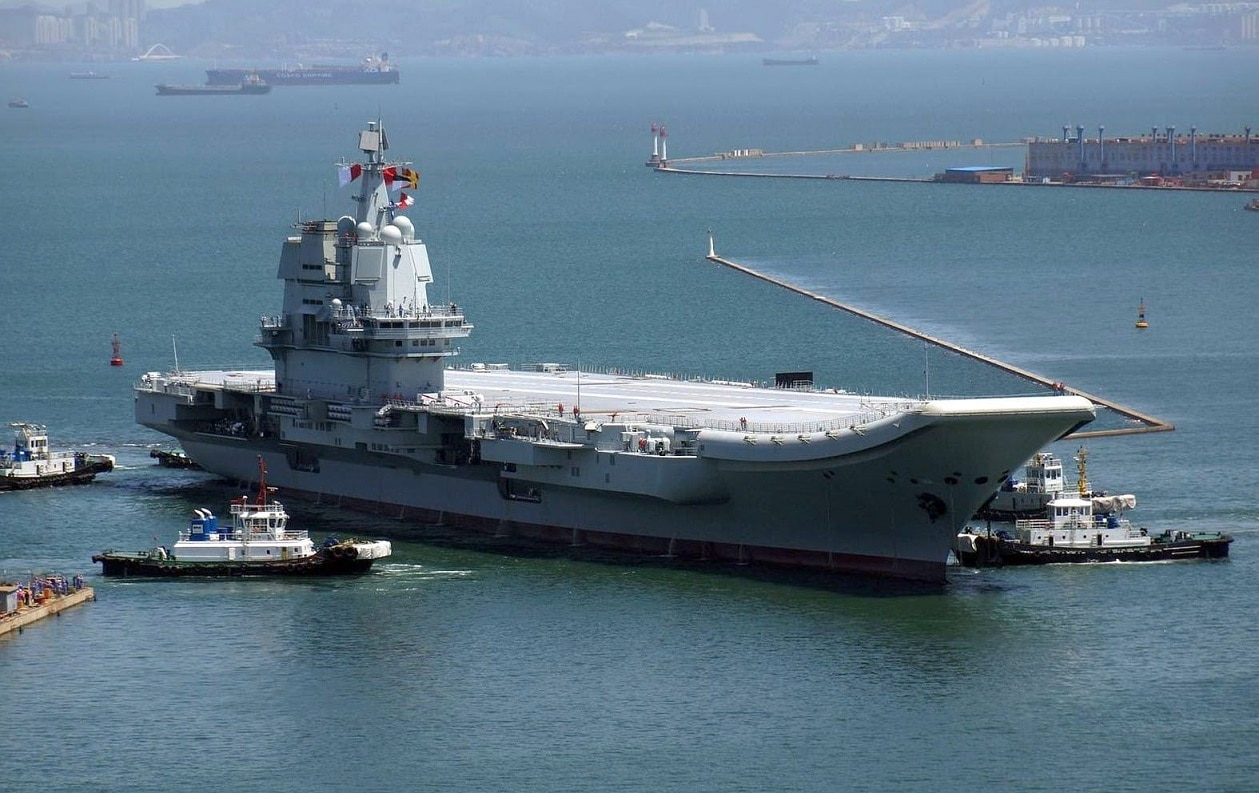China’s newest aircraft carrier is being built at the Jiangnan Shipyard. That same facility is also constructing commercial ships for U.S. allies. The shipyard is also building more than 40 commercial vessels for U.S. allies such as Brazil, France, the United Arab Emirates, Taiwan, Singapore, Japan, Sweden, and the Netherlands.
Put another way, China’s foreign customers are effectively subsidizing the carrier’s construction.
According to the Center for Strategic and International Studies (CSIS), the unnamed Chinese carrier, designated Type 003, was photographed from space in October 2021. Those same photos showed the commercial ships being built for U.S. allies.
Type 003 will be China’s third aircraft carrier. It is expected to launch in the next few months, and the Pentagon’s latest annual China report to Congress estimates the carrier will be fully operational by 2024. A fourth carrier in this class is also under construction.
There is popular support in China to name the new carrier “Shi Lang,” an admiral who captured Taiwan for the Qing Dynasty. This sentiment reflects the people’s high expectations that Beijing will “solve” the Taiwan question. They want the aircraft carrier to symbolize China’s determination and ability to achieve this aim. It also sends a tough, warning signal to Taiwan.
China’s carrier strike groups have materialized from rather primitive origins quite suddenly. China had never possessed an aircraft carrier before buying the ex-Soviet, ex-Ukrainian Varyag in 1998.
The first carrier to be built in China was designated Type 001A (later changed to Type 002), the Shandong. It was built in only four years—from the laying of the hull in 2013 to its launch in 2017—one of the shortest build times in the history of aircraft carrier construction.
The new carrier, designated Type 003, is larger than the Type 002 and is expected to be conventional, not nuclear-powered. The new ship may employ electromagnetic catapults, which would be a significant improvement over jump ramps used in the first two Chinese aircraft carriers. The use of catapults increases both the range and payload of launched aircraft.
With an expected displacement of 110,000 tons, the new carrier includes increased storage for ammunition and fuel and capacity for 44 aircraft, eight more than Type 002.
The Type 003 carriers will be the first ships to rival the largest, most powerful U.S. super carriers. China will also have a new generation of fighters and drones available by the time the 003 is ready.
In an era of renewed great power competition, China’s naval modernization effort has become the top focus of U.S. defense planning and budgeting. Beijing now boasts the largest Navy in the world. China is conducting a growing number of operations in more-distant waters, including the Western Pacific, the Indian Ocean, and waters around Europe.
China’s Navy now poses a major challenge to the U.S. Navy’s ability to achieve and maintain wartime control of blue-water ocean areas – the first such challenge the U.S. Navy has faced since the end of the Cold War. China’s naval modernization effort is assessed as being aimed at developing capabilities for addressing the situation with Taiwan militarily.
For the Chinese, aircraft carriers are not only weapons platforms, but important political symbols. They reflect and demonstrate China’s determination and ability to achieve its aims. Their new carriers also send a tough warning to Taiwan.
This we know, but the question remains: Why would friends of the U.S.—among them allies it is obligated to defend—contribute to the construction of weapons that may be used against them?
William Middendorf, a former Secretary of the Navy, is the author of The Great Nightfall: How We Win the New Cold War.
More About This Author: Middendorf has served a number of presidential administrations in high-level positions, including Secretary of the Navy and Ambassador to the European Communities, the Organization of American States, and the Netherlands. A delegate to presidential nominating conventions as far back as Barry Goldwater’s in 1964, Middendorf remains active in shaping conservative foreign, defense and economic policy through regular meetings with staff members on Capitol Hill.
An intellectual force behind the North American Free Trade Agreement, having written about the concept of a free-trade area uniting the region as early as 1988 in Heritage’s “Mandate for Leadership III,” Middendorf also is a true renaissance man with interests in both music — he wrote Heritage’s theme march — and art.

